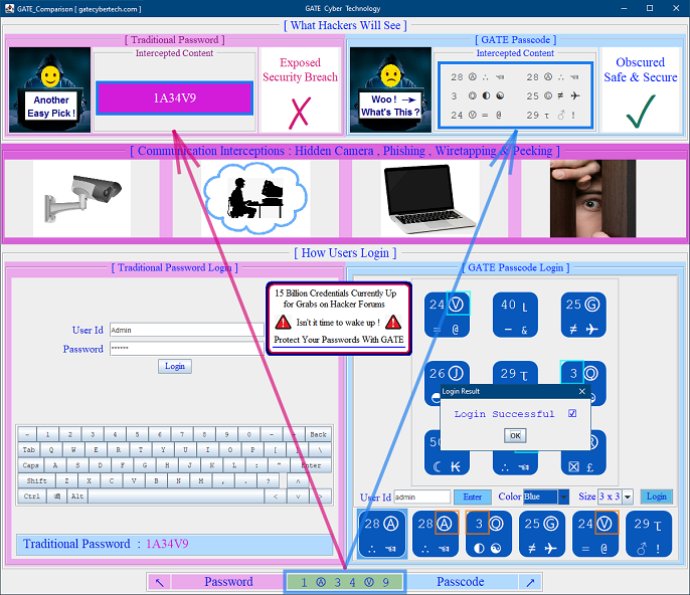GATE software uses simple passcodes to prevent unauthorized access through methods like wiretapping, phishing, and keylogging. With no restrictions on character combinations, it defeats typical dictionary attacks while ensuring easy-to-remember passwords.

The system is designed in such a way that when button selection is made by a user, an observer is unable to determine the actual password, thanks to the multiple characters per button. This makes GATE an interception-resistant authentication system that significantly increases passcode strength.
Each subsequent rendering of buttons by the server is unique and based on the GATE algorithm, which ensures button selection cannot simply be repeated based on button location to infiltrate an account. Additionally, to present password buttons to a user, a server must first know the user password. Therefore, bogus or malicious servers are unable to render an appropriate array of buttons, allowing users to identify if the screen they are looking at is being controlled by the appropriate body.
In traditional password systems, the server authenticates the user, but with GATE, the user also authenticates the server, making it an ideal phishing-resistant system. GATE can use short and easy to remember passcodes like those found in fixed password systems, to defeat peeking, wiretapping, keylogging, phishing, and dictionary attacks, without the strict requirements of lowercase and uppercase letters, numbers, and special characters.
GATE passcodes offer the best of both worlds by being both easy to remember yet secure and challenging to hack. While fixed passwords are easy to remember, and one-time passwords are hard to hack, GATE passcodes offer the benefits of both systems.
If you're interested to know more about the weaknesses of traditional password systems compared to the strengths of the GATE system, you can try out the FREE demo app, GATE_Comparison.
Version 1.0: New Release.